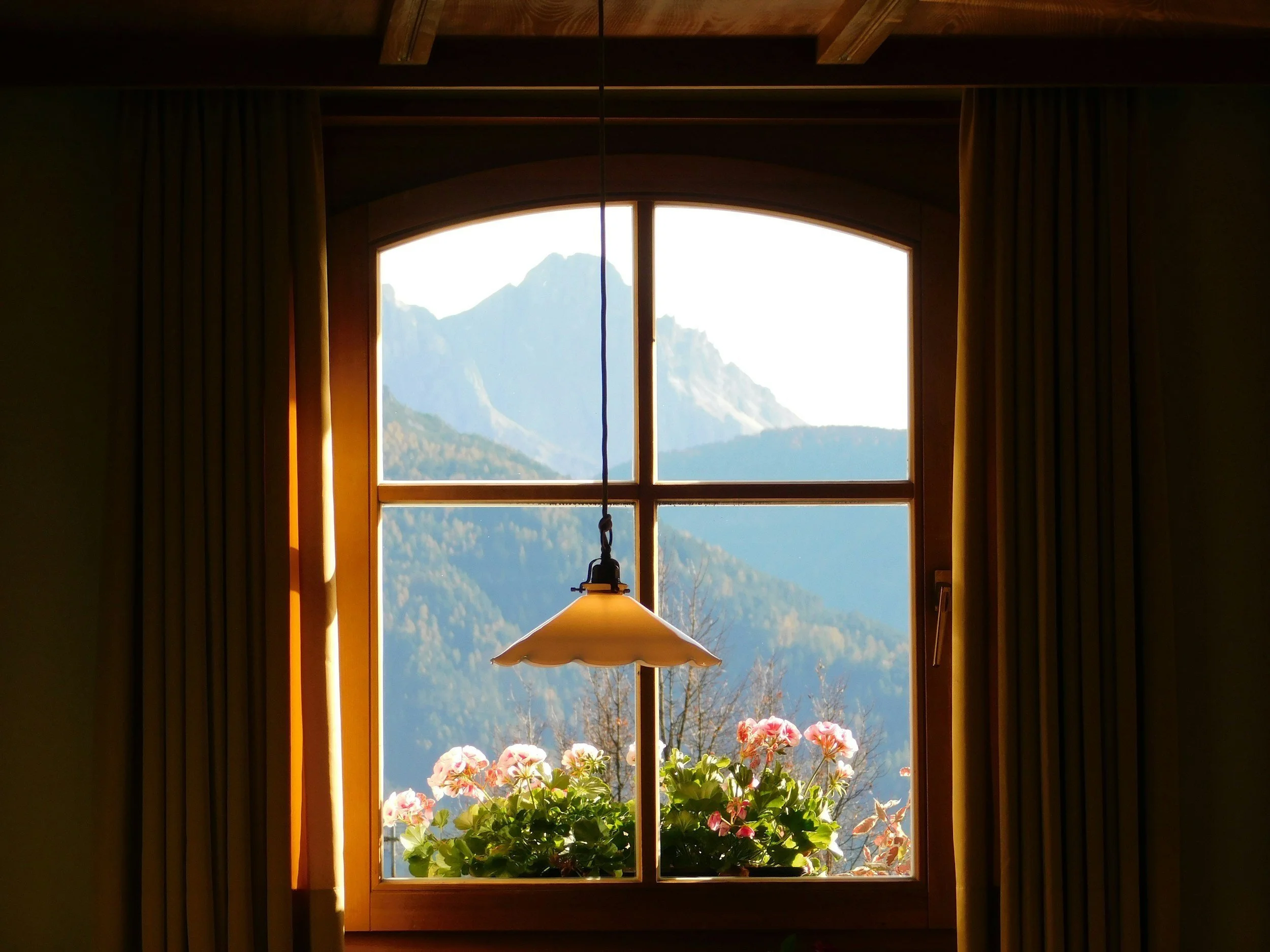Winter Garden Chronicle: Keeping Your Thumbs Green in the Cold
/It’s hard to acknowledge you’ve failed at something, especially if you’re a type “A” personality like me. But last winter I tried, and failed, to keep my winter container garden alive. Ok, the violas survived the cold and snow, but they don’t count, since they are by nature tolerant of winter weather. Everything else – the Japanese eggplants, the miniature peppers, the carrots, and the green beans, suffered miserably before finally wilting into pathetic looking, half-frozen messes.
In my defense, it was not entirely my fault. An unexpected early frost last November derailed my plans for a thriving winter garden. In a panic the morning after the frost, I frantically dialed my friend Loni, a professional nutritionist and expert grower of edibles in all seasons, to see if she could help.
Build a shelter with plastic and PVC pipe, insulate underneath your containers, monitor them closely, and they might still survive, she sagely advised. I did as she said, but still they died on me, after perking up brightly and thereby cruelly convincing me they just might live on, despite the obvious signs of impending death.
On the other hand, it was my fault. I could have erected the shelter earlier, before the cold was nearly upon us. And I could have done my homework better to find out how to build a proper shelter, not one that fell down on top of the crops with the first heavy rain or snow. I didn’t realize that shelters needed support beyond just a few bent PVC pipes attached precariously to a few small pieces of wood and the side of my deck for support. I didn’t realize that the roof of my shelter needed to be reinforced with a stronger frame – or that it needed much of a frame at all.
So, winter garden redux: I am trying again this winter, armed with a little more knowledge and a lot more determination to make this succeed. Despite some predictions that we’re going to have a warmer-than-normal winter this year in the mid-Atlantic region where I live, I’m going to make the best use of the knowledge I have gained since last winter. Some of it came from my own research into winter gardening, and some from my Twitter followers, among whom are experts in growing many things, especially good, healthy food.
There are a lot of pluses to growing food in the winter. For one, there aren’t as many bugs, and the risks of fungus damage are lower. This past summer it seemed like I was battling aphids, whiteflies, and spider mites nonstop. Squash vine borers and grasshoppers relentlessly attacked my zucchini, broccoli and peppers. Slugs invaded the flower beds in my backyard every week. I gave up on the tiny climbing roses in my front yard and cut them back severely, only to have their leaves push through the bark, flower, and quickly become infested with aphids again. On top of that, the wet weather brought fungus (for a second year in a row). I felt at turns frustrated, hopeful, discouraged, and thrilled. A few encouraging comments from friends and my local garden supply store about how amazing it was that I managed to revive some plants that should have been long dead (like my lovely red coleus) strengthened my resolve.
I was determined to grow again this winter, but this time I would do a much better job, making use of what I had learned and maximizing my growing space. This year I’d grow more herbs and lettuce inside the house, and wouldn’t restrict myself to growing vegetables on the deck: I’d use some of the space in my back yard to branch out and grow vegetables I hadn’t tried before.
The back yard seems like a perfect place to grow, and in theory, it is. My yard is enclosed by a fence, which works out well since my town house buts up against the woods. I don’t’ have to worry about deer eating my crops (my 92-year old neighbor keeps them well-fed anyway), and although it’s a small yard, there’s ample space for growing food. On the other hand, it has some drawbacks that have kept me, until now, from attempting to grow anything more than (non-edible) flowers.
While I love my wooden fence (which, incidentally, I built myself………..ok, with a little help from my ex-husband), unfortunately, it doesn’t keep out all of the critters living behind it in the woods. These include the rabbits (who I actually don’t mind, at least not yet), the squirrels (sorry animal lovers, I despise the squirrels, as they leave a mess everywhere and steal my tomatos), the raccoons (who are very skilled at opening even sealed, tightly bungee-corded garbage can lids – I finally learned to deter them by placing 5-pound weights on top of the garbage can) and the rats (who moved into the back yard 2 years ago, who I hired an exterminator to evict soon afterwards, and who boldly showed up again this past summer, digging themselves cozy little nests underneath my English Yarrow.)
This year, I decided not to worry so much about the critters out back. Heck, I might even try planting a crop or two for them in the woods just to deter them from showing up, hungry, in my yard. Instead, I have focused on figuring out what I can grow back there that might actually do well with minimal protection from a cloche or cold frame.
My zone (zone 7) has a fairly lengthy growing season, so I’ll be attempting a few things I’ve grown before in other seasons (peppers, green beans, broccoli, zucchini, lettuce, Swiss Chard, and a few herbs), and several other things I’ve never tried: carrots, potatos, garlic, cauliflower, onions). I’m especially excited about the possibility of going out to my back yard and pulling carrots out of the snow, like the Amish farmer I saw doing this on YouTube (Who knew? With a mulch of fall leaves to insulate them, carrots apparently can thrive under these conditions).
A few streets down from my neighborhood, someone has been building a greenhouse in his backyard, using the same basic building blocks that I attempted to use last winter, and watching it go up has taught me more about where I went wrong, and about how to make a plastic-lined shelter the right way (I’m guessing his won’t tumble down after the first heavy rain or snow. Since he also recently acquired some goats, I assume he really knows what he’s doing. If he agrees, I’ll interview him this winter for a future blog post.)
To give myself a better chance of producing a successful winter garden, I did a little digging around (pun intended) and found these4 basic questions that every winter gardener should ask himself or herself before embarking on this journey:
1. What should I grow? – this depends on your growing zone and the time of year you are beginning to plant your seeds or seedlings. Some plants (e.g. carrots, garlic, onions, spinach, Swiss chard) are easier for the inexperienced gardener, while others, like cauliflower, may be more challenging. If you are a beginner or relatively inexperienced, it’s best to start with an easier crop that is also something you like to eat on a regular basis.
2. Where should I plant my crops? – ideally, you have a yard with ample space for planting. If not, you can always plant a few key crops on a deck or terrace, or grow them indoors in a basement or cellar. There are other vegetables you can grow indoors with a little more effort; a little online research will help you find the ones that appeal to you most.
3. How will I protect my plants from the cold? As I mentioned earlier, carrots mulched with autumn leaves grow even under packed snow. You can also mulch with wood chips (which you can get for free from tree trimming companies), or a piece of burlap or garden blanket. If you are handy or just ambitious, you can build a cold frame or an inexpensive, plastic-covered mini-greenhouse to protect your crops through the cold season.
4. Where can I go for help if I have a question or run into trouble? You may not have a friend with a green thumb who is willing to drop everything to help you figure out why your crops are not thriving. Being prepared beforehand is always better than panicking at the last minute when things go wrong. There are a number of good websites that offer advice on winter gardening: my go-to sources are Mother Earth News, and the lazy gardener’s blog at Sierra Club. A Green Hand has some good advice on protecting your plants from frost and freeze. I have also called the agriculture department of my local university for advice and tips. Your local nursery can also help you figure out what to plant, and may be able to diagnose problems if you bring in photos, soil samples, or clippings from your troubled plants.
I’ll be chronicling my journey to building a (successful) winter garden in words and pictures over the course of this winter. This will appear on the Green and Prosperous website, and on Green and Prosperous’ Facebook, Google Plus, and Instagram pages, which you can access by clicking on the embedded links here, or the social media icons on the home page. I’d love to hear your advice, if you have any to share. And if you add your name to the Green and Prosperous subscriber list, I’ll share tips and best practices with you, along with a meal planner that you can use to make dinners easier in your home.





































